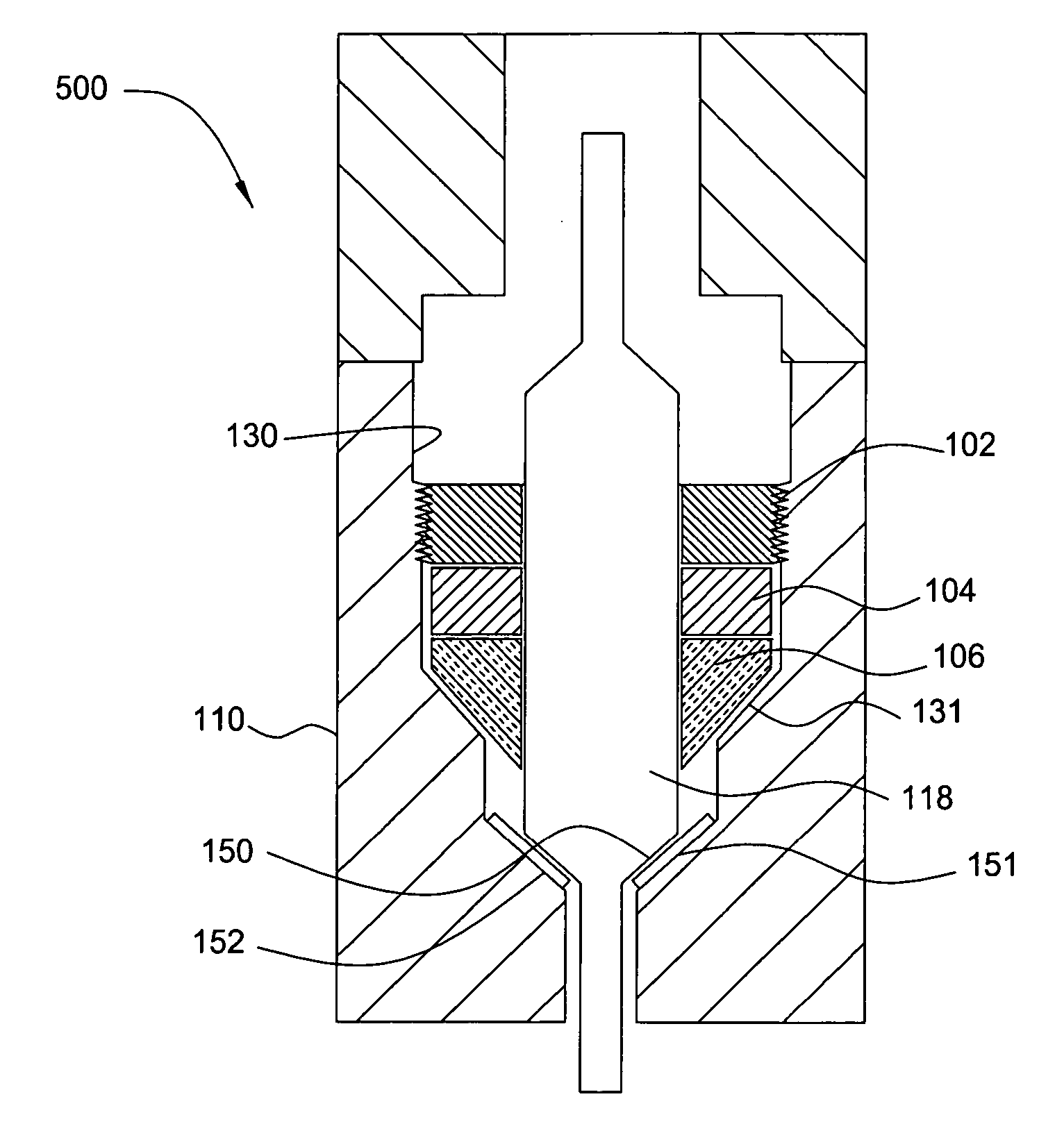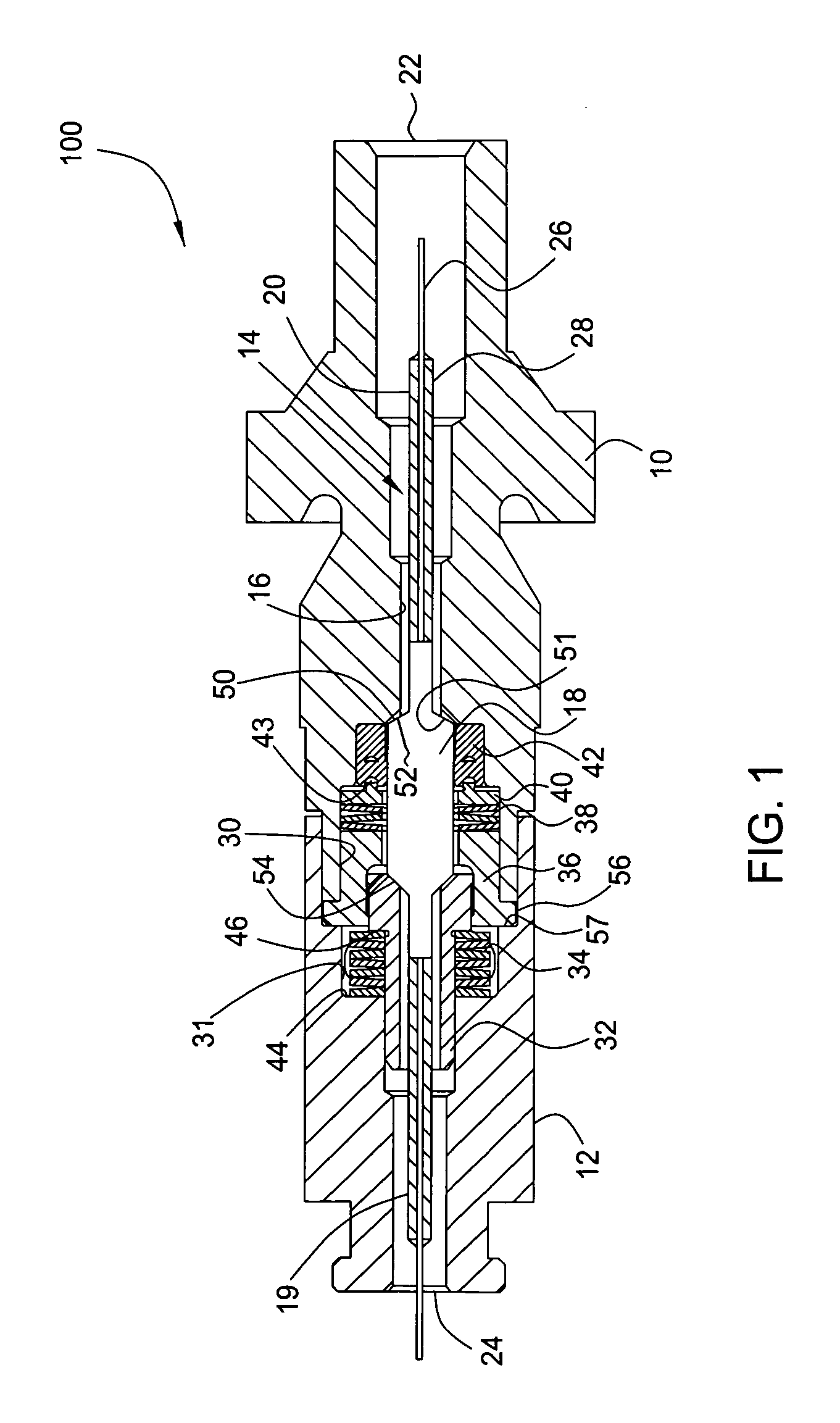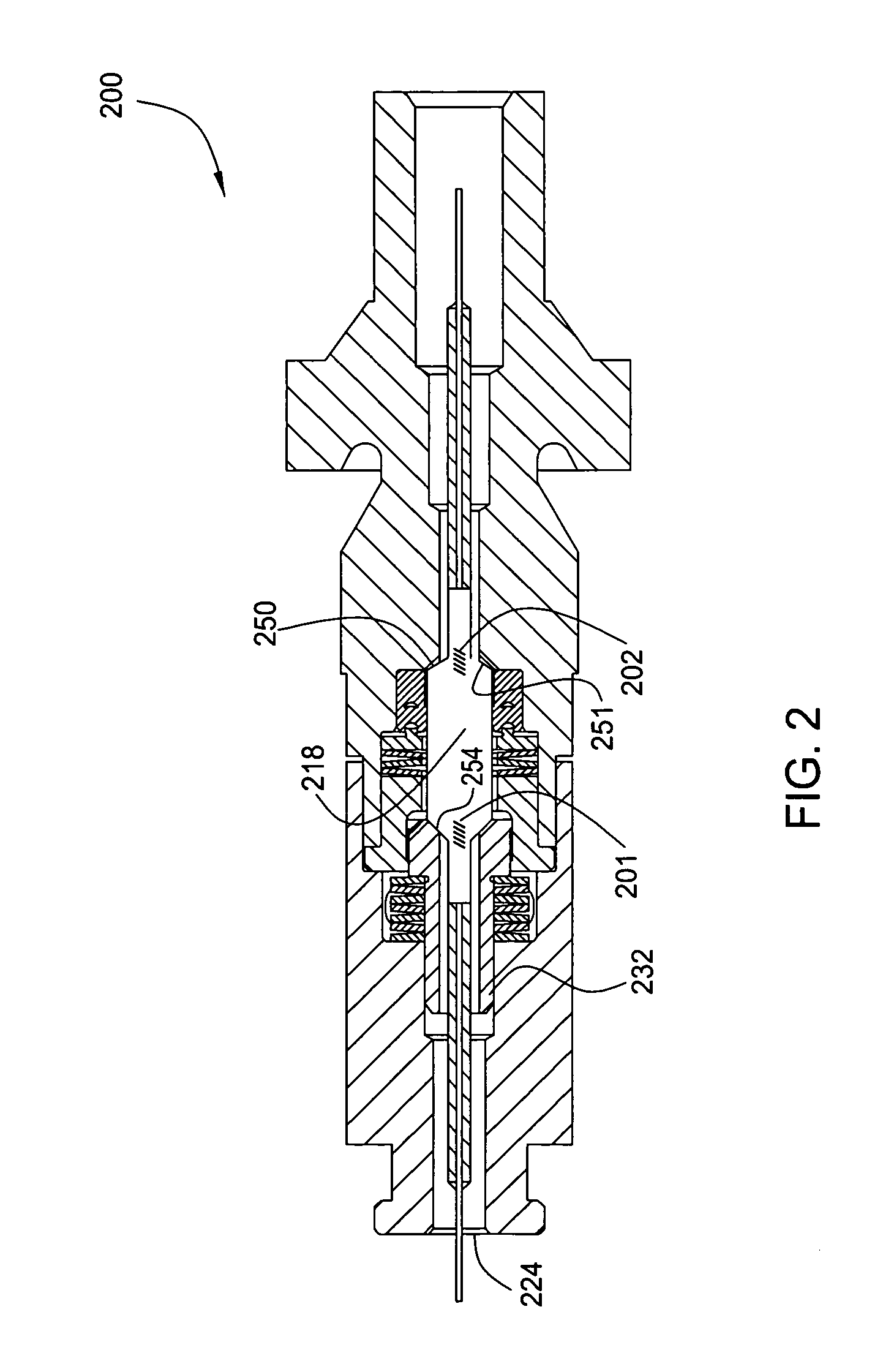Optical waveguide feedthrough assembly
- Summary
- Abstract
- Description
- Claims
- Application Information
AI Technical Summary
Benefits of technology
Problems solved by technology
Method used
Image
Examples
Embodiment Construction
[0027] Epoxy-free optical fiber feedthrough assemblies applicable for use in high temperature, high pressure environments are provided. In one embodiment, a feedthrough assembly includes a glass plug disposed in a recess of a feedthrough housing. The glass plug is preferably a large-diameter, cane-based, waveguide adapted to seal the recess in the housing and provide optical communication through the housing. All embodiments described herein provide for sealing with respect to the housing at or around the glass plug of an optical waveguide element passing through the housing.
[0028] As used herein, “optical fiber,”“glass plug” and the more general term “optical waveguide” refer to any of a number of different devices that are currently known or later become known for transmitting optical signals along a desired pathway. For example, each of these terms can refer to single mode, multi-mode, birefringent, polarization maintaining, polarizing, multi-core or multi-cladding optical waveg...
PUM
 Login to View More
Login to View More Abstract
Description
Claims
Application Information
 Login to View More
Login to View More - R&D
- Intellectual Property
- Life Sciences
- Materials
- Tech Scout
- Unparalleled Data Quality
- Higher Quality Content
- 60% Fewer Hallucinations
Browse by: Latest US Patents, China's latest patents, Technical Efficacy Thesaurus, Application Domain, Technology Topic, Popular Technical Reports.
© 2025 PatSnap. All rights reserved.Legal|Privacy policy|Modern Slavery Act Transparency Statement|Sitemap|About US| Contact US: help@patsnap.com



